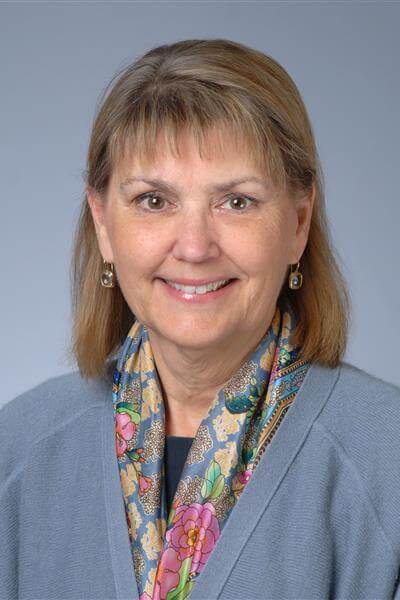
Kathryn J. Jones, PhD
Professor Emeritus of Anatomy, Cell Biology & Physiology
Adjunct Professor of Neurology
Research Career Scientist, Roudebush VA Hospital
- kjjones1@iu.edu
- Phone
- 317-274-7496
- Address
-
MS 5035
ANAT
IN
Indianapolis, IN - PubMed:
-

Bio
Previous Academic Appointments
1993-2010: Hines VA Hospital, Research Health / Career Scientist
2009-2010: Dept of Microbiology and Immunology, Loyola University, Professor
2008-2010: Neuroscience Institute, Loyola University, Director
2007-2010: Dept of Otolaryngology, Loyola University, Professor
1997-2009: Dept of Cell Biology, Neurobiology and Anatomy, Loyola University, Professor
1994-1997: Dept of Cell Biology, Neurobiology and Anatomy, Loyola University, Associate Professor with tenure
1991-1993: Depts of Physical Therapy, and Anatomy & Cell Biology, University of Illinois at Chicago, Associate Professor
1987-1990: Dept of Cell Biology and Anatomy, the Chicago Medical School, Assistant Professor
Honors
Wisconsin Honor Scholarship, 1971
Sigma XI, University of Illinois, 1978
NIH Behavioral Sciences Training Grant Trainee, 1983-1986
VA Research Outstanding Performance Award, 2005-2010
Hine VA Research Employee of the Quarter, 2002
VA Research Career Scientist Award, 2005-present
Fellow of the American Association of Anatomists, 2007-present
| Year | Degree | Institution |
|---|---|---|
| 1986 | Postdoctoral Training | The Rockefeller University, New York, (1983-1986) |
| 1983 | PhD | University of Illinois at Chicago |
| 1975 | BS | University of Wisconsin-Madison |
The overarching goal of the research being conducted in our laboratory is to elucidate basic mechanisms underlying neural injury and repair in the mammalian nervous system following injury and/or disease. In vivo injury studies include both peripheral nerve injury (PNI) and spinal cord injury (SCI) animal models, immunodeficient animals, and an animal model of amyotrophic lateral sclerosis (ALS). In vitro studies include stem cell-derived motoneurons, and olfactory ensheathing cells as transplant material in SCI. Our long term goal is to translate our understanding of neural injury and repair to the clinical situation. There are currently 3 directions of research being conducted. First, we are investigating gonadal steroid hormones as neurotherapeutic agents in PNI and SCI. We are currently studying the combination of gonadal steroids and electrical stimulation in accelerating functional recovery after several different types of facial nerve damage, recurrent laryngeal crush injury, and sciatic nerve damage. These studies are being done in collaboration with clinical colleagues in Otolaryngology and Neurosurgery, and have the potential of translational application to clinical situations involving various types of peripheral nerve damage in humans. We are also examining the ability of gonadal steroid hormones to be neuroprotective after acute contusion spinal cord injury at the cervical level - a model relevant to our veteran population today. These studies are being done in collaboration with Dr. John Houle at Drexel University, and include combinatorial treatment strategies utilizing growth factors and olfactory ensheathing cells to promote axonal regeneration and behavioral recovery following neuroprotective treatment with gonadal steroid administration immediately after SCI. Second, we have discovered, in collaboration with Dr. Virginia Sanders at The Ohio State University, that CD4+ T cells can rescue motoneurons (MN) from injury-induced cell death and identified a physiologically relevant endogenous mechanism of immune-mediated neuroprotection. Recently, we have initiated work with an animal model of ALS, the SOD1 mouse, and found that the neuroprotective mechanism underlying immune-mediated rescue of MN after injury is defective in the SOD1 animal. Importantly, the defect may not be in the MN itself, but rather in a dysregulated microenvironment surrounding the MN cell body and/or a peripheral immune cell defect. These results are potentially paradigm-shifting in terms of our understanding of the underlying pathogenesis and progression of ALS, and are being done with clinical colleagues in Neurology. Finally, we are developing an in vitro PNI injury model utilizing stem cell-derived motoneurons and microfluidic chambers, and will explore peripheral immune cell-MN interactions from a tissue culture perspective with this system.